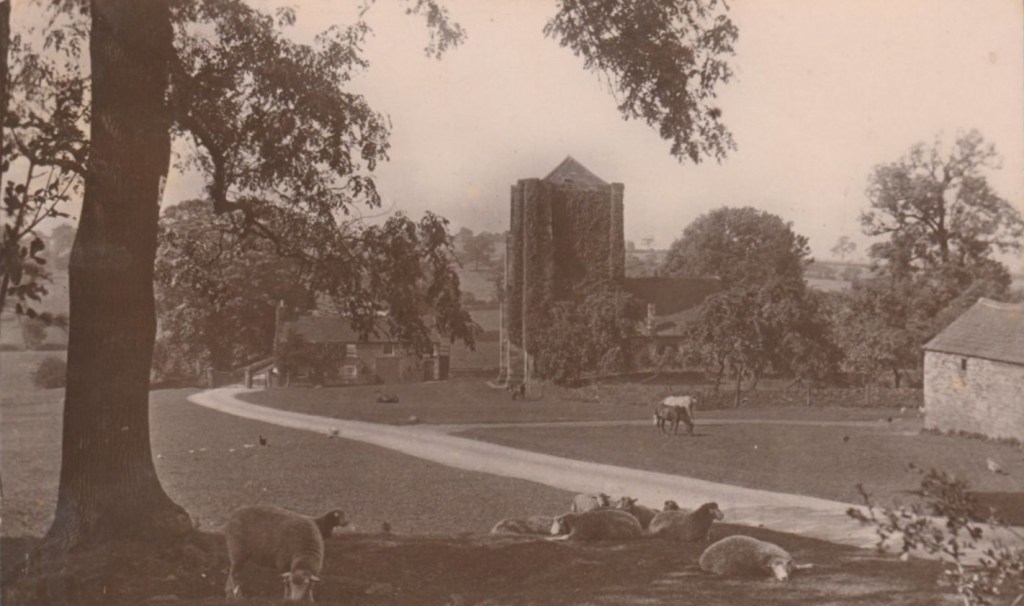
Until Beauchief Abbey, together with the surrounding estate, was purchased by Frank Crawshaw in 1922, little beyond the name and a private chapel with a western tower, remained to remind anyone of the former magnificence of this house of Premonstratensian Canons.
At this time, Beauchief Abbey (comically mispronounced outside Sheffield, it should be spoken as Beechiff), was set in a beautiful rich valley, through which the Abbey Brook meandered, bounded by well-wooded hills and by the distant Derbyshire Moors.
Sheffield has swallowed it up now, but Beauchief Abbey remains in a tranquil location and its history remains a mystery to many.
The suburb of Beauchief takes its name from the small abbey, founded on the southern border of Hallamshire over eight hundred years ago.
Beauchief is a Norman French name for the ‘beautiful headland’ above the River Sheaf.
The abbey was dedicated to St. Mary and St. Thomas the Martyr, otherwise known as Thomas Becket and now more commonly known as St. Thomas of Canterbury.
It was founded somewhere between 1173 and 1176 by Robert FitzRanulph, former Sheriff of both Derbyshire and Nottinghamshire and Lord of Alfreton and Norton in Derbyshire, Edwalton in Nottinghamshire and Wymeswold in Leicestershire.
The Beauchief estate was created in a remote part of FitzRanulph’s manor of Norton, right on the border with Yorkshire.

The White Canons (or Premonstratensian Canons) came from Welbeck Abbey which had been founded in 1153. The White Canons lived under a rule less strict than that of the monks, and attended regular services at the abbey church, ate a vegetarian diet in the refectory, and slept in the common dormitory.
The abbey land amounted to about 800 acres with the abbey set in a park of about 200 acres with several fishponds fed by the small stream.
The White Canons also owned a corn mill at Bradway, a fulfilling mill on what is now the site of Dore Station, a corn mill to which Millhouses was named after, and a smithy – Smithy Wood.
Beauchief was surrendered ‘without any trouble or giving opposition’, as part of the dissolution of monasteries, and in April 1537 was granted by Henry VIII to Sir Nicholas Strelley , Lord of Ecclesall, on the opposite bank of the River Sheaf. The description of the property granted was of ` the house and site of the abbey or monastery De Bello Capite’ and included gardens, orchards, ponds and parks plus a further 259 acres.

In 1648, it passed through the marriage of Gertrude Strelley to Edward Pegge of Ashbourne, who used much of the stone from the abbey to build a suitable country house called Beauchief Hall.
Seven bays wide and three storeys high, it was built on a site to the south-west of the abbey described as `a gentle descent on the brow of the hanging wood, the bellum caput or Beau Chef’. The house is thought to have been the site of the Grange where the monks formerly made their butter and cheese.

Pegge adapted the ruins of the abbey church into a private chapel and by the 1660s this was the only part of the old abbey remaining.
The present appearance of the abbey grounds owes itself to excavations carried out between 1923 and 1926 by William Henry Elgar, an Art Master at King Edward VII Grammar School.
Frank Crawshaw, a businessman and local councillor, as owner of the estate, encouraged the excavations and on the very first afternoon a wall to the west of the cloister was discovered, and during the next two months they succeeded in tracing this southward to the refectory doorway.
Search was then made for the opposite wall, and when it was found attention was drawn to the eastern end of the abbey and defining the site for excavation. When the sanctuary was laid bare the base of the high alter and two broad steps were uncovered in which several fourteenth century tiles bearing arms were found.
A recess was also found in the north wall which had held a coffin of a full grown man, believed to have been the founder, Robert FitzRanulph. Several bones and portions of the lead coffin were found.
“The buildings included an aisleless cruciform church about 150ft long, each transept having two almost square chapels, and a great western tower. Abutting against the tower was the western range of the cloister, and against the south transept came the eastern range: the south side of the cloister was formed by a long refectory with a kitchen adjoining it.”

In March 1931, Frank Crawshaw gifted Beauchief Abbey to Sheffield Corporation, which agreed to buy the nearby golf course, the adjoining Abbey Farm, land, and woods, comprising about 166 acres, and extending from near Woodseats to Twentywell Lane, for £30,000. Parts of the old estate have now been built on – Greenhill and Bradway – and the areas around Abbey Lane and Hutcliffe Wood.
Today, only the western tower of the Abbey remains, together with some ruins (including a wall) to the immediate south-east. The tower is attached to the chapel (now a church). The foundations of other buildings are visible, and the medieval fishponds still exist.
Much of the old estate is now occupied by two golf courses (Abbeydale Golf Club and Beauchief Golf Club), but several areas of ancient woodland remain: Parkbank Wood to the east of the Abbey, Old Park Wood and Little Wood Bank to the south, Gulleys Wood in the centre of the park and Ladies Spring Wood to the west.
